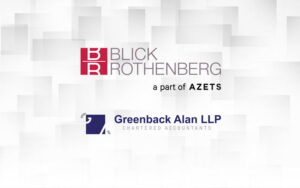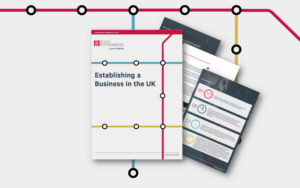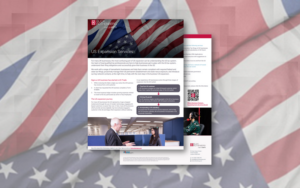
Spring Statement 2025 – Focus for Businesses
With the underwhelming Spring Statement out of the way, businesses and individuals can now plan with more clarity concerning the changes that were made by the Chancellor
4 April 2025 | Authors: Genevieve Morris | John Bull
Our experts at Blick Rothenberg have addressed some key areas of planning that will be required over the next 12 months
Why does the recent changes on Employers NIC and minimum wage disproportionately affect the cost of lower paid employees? And what steps can employers take to mitigate the cost of this on their obligations starting in April 2025.
There were two main changes announced in the Autumn Budget regarding Employer’s NICs. The most widely known is the increase to the headline rate of Class 1 Secondary contributions, which is rising from 13.8% to 15%. Employment costs associated with lower paid employees will be disproportionally affected however, as a further change will see the “secondary threshold” being reduced from £9,100 to £5,000. This will mean an additional NIC bill of £615 per employee for a part-time worker earning just £5,000 a year. Larger businesses are impacted more than smaller businesses as the Employment Allowance (a deduction from the total Employer NICs payable to which every employer is entitled) will be increased from £5,000 to £10,500.
These changes arrive alongside an increase to the National Living Wage of 6.7% to £12.21 per hour. For a full-time worker on minimum wage this would equate to an additional cost of c£1,400 per employee in addition to the higher NIC costs.
There are a number of changes that businesses may be able to make to mitigate their NIC costs. One of the simplest is to use a ’salary sacrifice’ scheme for certain benefits which are NIC efficient. In effect, an employee gives up salary which would be subject to NIC and receives a benefit, such as an employer’s pension contribution, an electric vehicle or a bicycle under the cycle-to-work scheme. These schemes also save the employee income tax and employee’s NIC, so both parties benefit. For more highly remunerated and senior employees, certain share schemes can offer NIC savings for employers as it is possible for both parties to elect to transfer any employer’s NIC liability to the employee, typically to be paid out of the proceeds of the shares when sold.
The last Budget saw increases to Capital Gains Tax (CGT) and changes to Business Asset Disposal relief. What does this mean, and importantly how does the change affect transactions?
The Autumn Budget saw an immediate step up in Capital Gains Tax (CGT) with the lower rate rising from 10% to 18% and the higher rate increasing by 4% to 24% for all realised gains from the morning of 30 October 2024. This new higher rate aligns the main rate to the existing residential property surcharge which does not change. Whilst the immediate nature of the change did not permit portfolios to be restructured, it has reinforced the importance of developing a balanced portfolio that fits your personal requirements – taking into consideration the use of investments with tax-free wrappers together with available allowances and exemptions.
At the same time the headline rate for Business Asset Disposal Relief, which currently sees qualifying assets taxed at 10%, is set to increase to 14% from 6 April 2025 and 18% from 6 April 2026. The cumulative lifetime limit for qualifying gains on disposals remains at £1 million. These changes provide another opportunity for business owners to consider their succession planning, and whilst the rate increase from April 2025 may not provide sufficient runway to market and dispose of assets where transactions were not already in flight, owners may wish to consider their options for a managed exit ahead of April 2026. As always, any potential CGT savings should be considered versus the overall transaction consideration being offered.
For completeness, the CGT charge on carried interest will increase in April 2025 from 28% to 32% with proposals, subject to further consultation, to bring it within the income tax regime from April 2026. Whilst the immediate change sees the UK remaining competitive compared to other European financial centres, all eyes are on the outcomes of the consultation, which at its worst case could push relatively mobile Private Equity executives to consider relocating outside of the UK.
We saw in the Autumn Budget changes to the Inheritance Tax regime on pensions. What planning should a client aged 56 consider if he or she has a Self-Invested Personal Pension (SIPP) of £1,000,000 in value?
In the Budget of 30 October 2024, the Government announced that from 6 April 2027 the value of any ’unused’ pension funds will be included in the value of the deceased’s estate for the purpose of Inheritance Tax (IHT). The current IHT exemptions and allowances will apply across the whole, with the pension fund paying its pro-rata share of the IHT direct to HMRC. After the IHT has been settled, the balance pension funds can be distributed, being tax-free or taxed as income as now.
You should consider whether you want to review your estate/succession planning in light of the proposed pension IHT charge. If your pension fund remains primarily for your own retirement security, then the IHT change does not affect this.
On the other hand, if you are deliberately putting off drawing on your pension funds, so as to provide an efficient inheritance, you will have to review this strategy in the context of your overall affairs. You might consider taking withdrawals in your lifetime, especially any tax-free cash, and gifting that now, IHT-free if you live another 7 years.
Also consider drawing pension income and giving away the net proceeds. While the income withdrawals will be subject to income tax in your hands, if the net income is demonstrably surplus to your income needs, your gifts will not be subject to IHT.
Family businesses were disproportionately affected in the Autumn Budget by changes to Business Property Relief. What strategies can a family run business consider to mitigate future exposure to Inheritance Tax?
1. Upcoming Changes to IHT for family businesses and planning opportunities
From 6 April 2026, the UK Government plans to introduce significant restrictions to Business Property Relief (BPR) which is a key IHT relief.
Currently, BPR allows for 100% relief on unquoted shares (impacting privately owned family businesses) including those listed on the Alternative Investment Market (AIM). However, under the new rules, AIM-listed shares and those on similar exchanges will only qualify for 50% relief. Additionally, a new £1 million lifetime cap will apply to BPR at the full 100% relief rate, with any excess only qualifying for 50% relief (i.e.20%).
These changes could create financial pressure for business owners, as they may need to sell assets to cover their IHT liabilities.
2. Key Considerations and Planning Strategies
Given the potential impact of these reforms, shareholders of family businesses should carefully review their estate planning strategies. Key considerations include:
Wills: review wills to include transfers to spouse on death which is exempt from IHT. A spousal transfer would benefit from a CGT uplift, which allows for tax-efficient onward gifting to other family members such as children (see below).
Gifting shares during lifetime to individuals: Gifting shares broadly involves both CGT and IHT. If certain conditions are met, then CGT can potentially be deferred to when they are sold by the recipient. For transfers to individuals the IHT becomes exempt if the donor survives the gift by 7 years.
Gifting shares into Trust: This is popular for long-term asset protection. If conditions are met, then there is also a potential CGT holdover relief available for transferring into trust. However, there are various IHT points when the gifted assets are in the trust: a) upon transfer, b) every 10 years whilst assets (that are chargeable to IHT) are in the trust, and c) when these assets are removed from the trust.
Life insurance: Explore life insurance to cover future IHT liabilities, and for making lifetime gifts to the next generation. Insurance for the latter can be cost-effective given the tapering of the IHT rate over 7 years to nil.
Liquidating the business: This is usually low down the list, but it may be time to exit and benefit from at least the lower CGT rates. This then allows flexibility in gifting cash and therefore making a lifetime gift subject to the 7-year rule with or without insurance (as above).
Emigrate: The new rules exclude non-UK tax residents from IHT after ten years abroad, making emigration a potential succession planning option.
Would you like to know more?
If you have any questions about the above, please get in touch with your usual Blick Rothenberg contact or use the form below.
Individuals are advised to take formal advice before making any decisions.
Contact Us
You may also be interested in

Contractors and subcontractors in the UK construction sector must understand the Construction Industry Scheme

Vodcast – Steve Rigby











